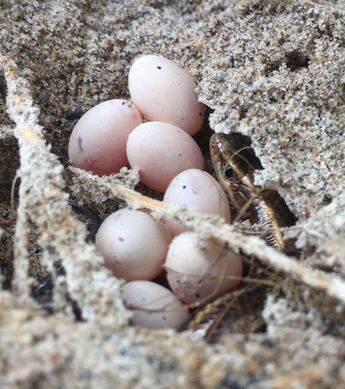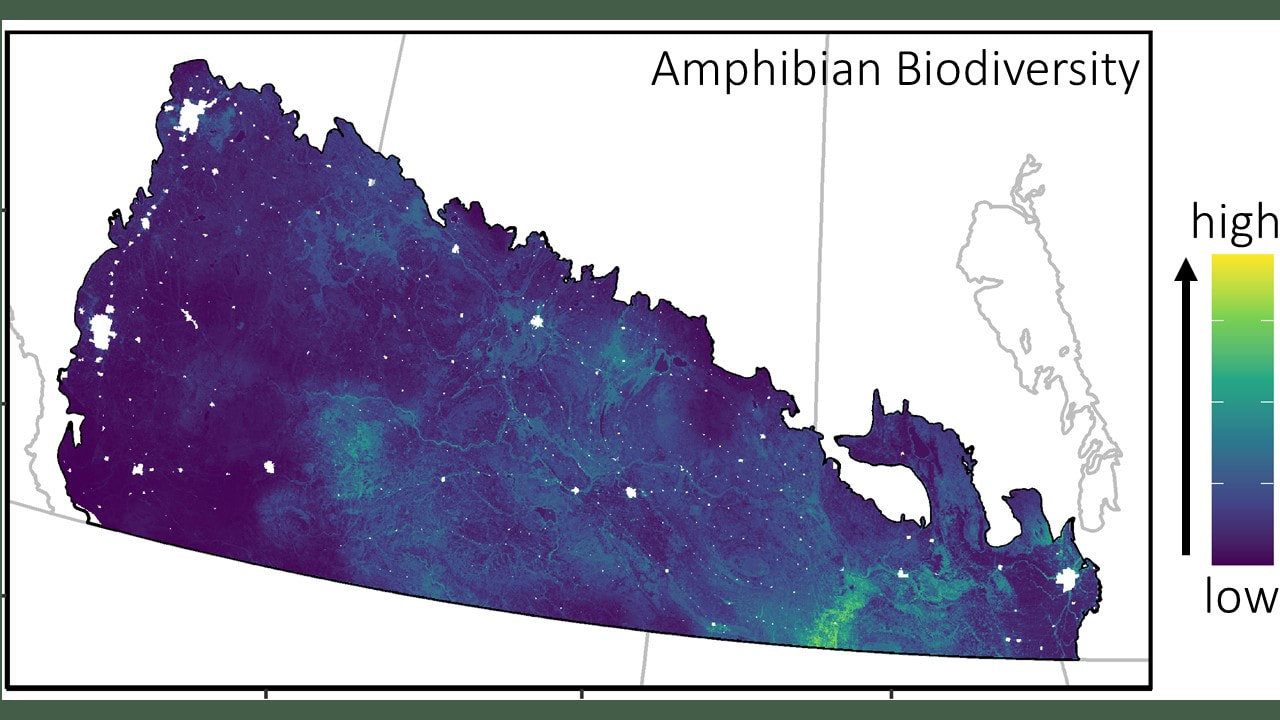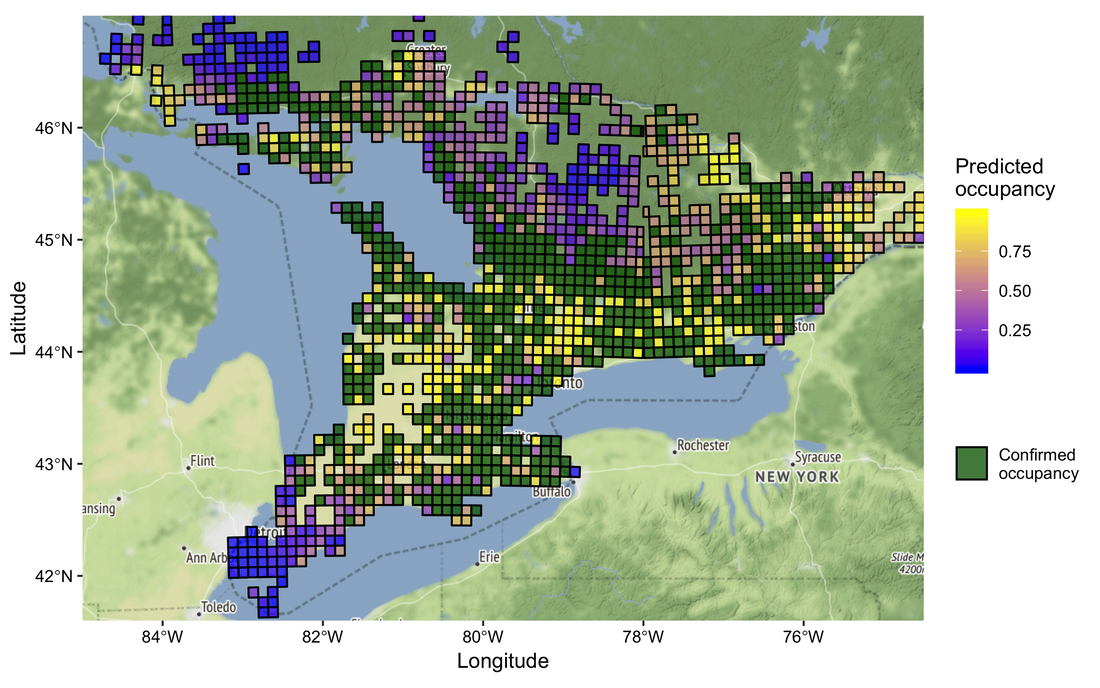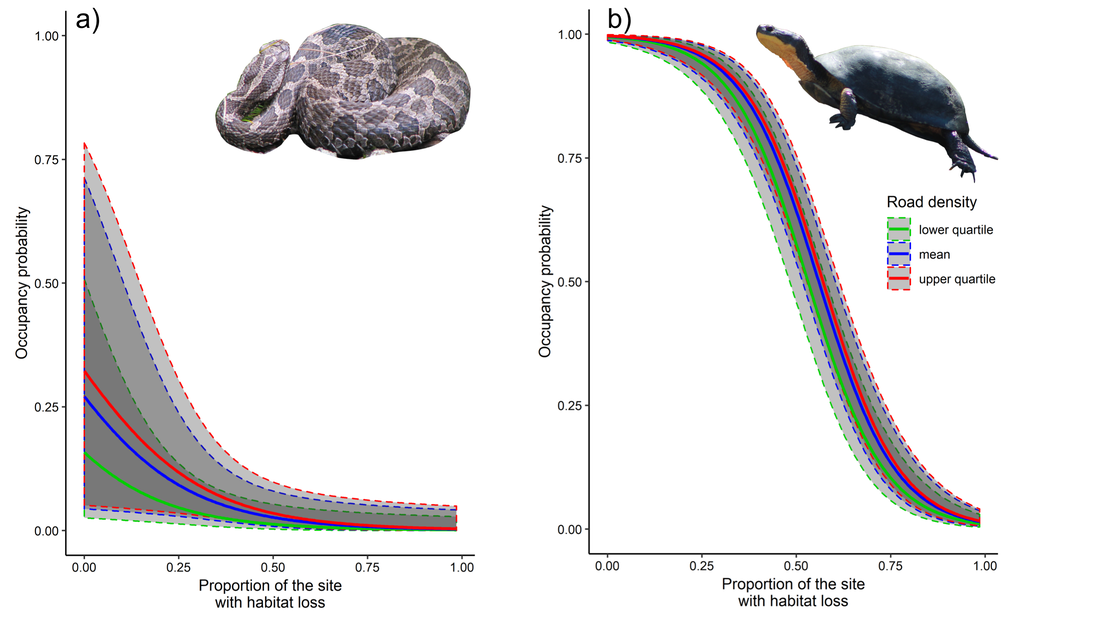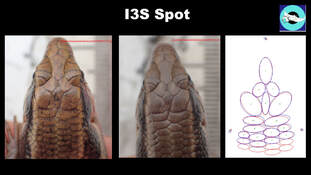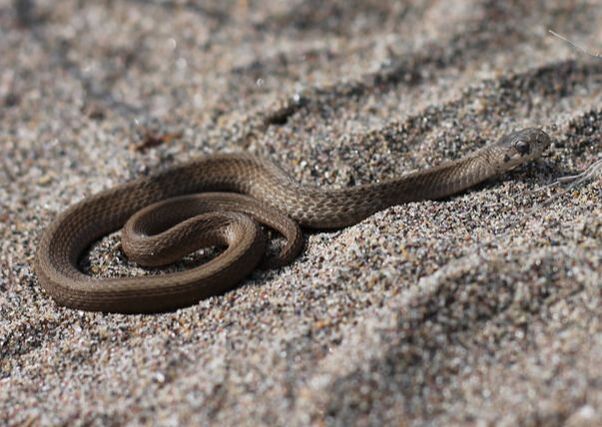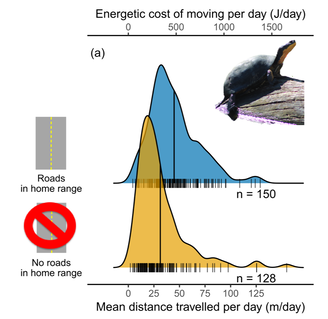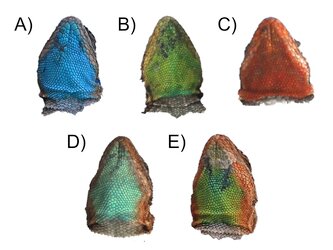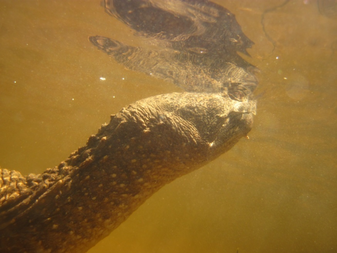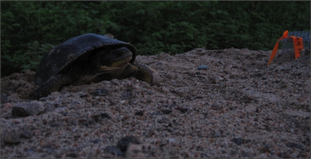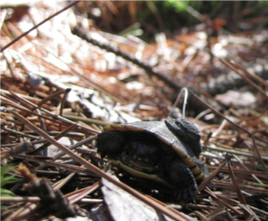Research
|
I am a quantitative ecologist and conservation biologist interested in the links between biodiversity, habitats, and people. The goal of my research is to explain spatial and temporal patterns in the abundance of wildlife and to improve conservation solutions for biodiversity.
My research fits into the following research themes:
|
Current projects
|
Biodiversity in restored wetlands
Wetlands are important habitats for biodiversity. However, many wetlands in prairie Canada have been drained with surface ditches to increase the land area for agriculture. Plugging ditches can restore the hydrology. My collaborators and I are monitoring bird and frog biodiversity in restored and undrained prairie wetlands across Alberta, Saskatchewan, and Manitoba using Autonomous Recording Units, camera traps, and remote sensing. Monitoring recovery of restored wetlands and estimating how landscape factors, like wetland density and surrounding land cover, is important to refine how limited conservation funding can restore wetlands to provide the largest benefits to biodiversity. |
|
Prairie Biodiversity Mapping and Assessment
My colleagues and I are building species distribution models to estimate prairie biodiversity in Canada and to estimate how land cover change, like the type of agriculture and the amount of wetlands, affect prairie biodiversity. Our results will estimate biodiversity benefits of conservation actions, such as protecting wetlands and marginal areas of grassland in agricultural fields. The tool will also help estimate biodiversity potential at the scale of a farm to estimate where biodiversity hotspots are. |
|
Combined extinction risks from habitat loss and road mortality in reptiles and amphibians
Habitat loss and road mortality are the greatest immediate threats to reptiles and amphibians in Canada, where the Committee on the Status of Endangered Wildlife in Canada (COSEWIC) estimates that the majority of evaluated reptiles and amphibians are at risk of extirpation. Notably, southern Ontario has more than 37,500 km of roads and has lost more than 70% of its wetlands since colonial settlement. My collaborators and I are testing how roads and habitat loss affect local extinction risk of reptiles and amphibians in southern Ontario, where both biodiversity and human impacts are very high. I am using a large community science database from Ontario Nature to build occupancy models to predict: 1) How habitat change affects extinction risk 2) Where species-at-risk still occur but haven't been reported from My collaborators on this project include Dr. Christina Davy, Dr. Ryan Zimmerling (Canadian Wildlife Service), Tanya Pulfer, Emma Horrigan, Smera Sukumar, and Brittney Vezina (Ontario Nature). |
|
Habitat selection and population ecology of Five-lined Skinks
The Carolinian population of the Five-lined Skink (Plestiodon fasciatus) in Canada is Endangered, and we know fairly little about individual habitat selection, movement, and survival. Using transects of cover boards and pattern-recognition of head scale patterns, I am testing how habitat modification affects habitat selection, individual movement, growth, and survival. |
|
Changes in abundance of reptiles and amphibians from habitat change
How does habitat change from housing and road mortality affect reptile abundance? As habitats change, there are likely to be shifts in community composition because some species are 'winners' and some species are 'losers' in the new habitat composition. I am using abundance data from monitoring cover boards over several years to measure how a reptile community responds to habitat change. |
Past projects
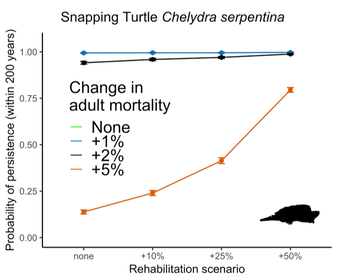
Population effects of wildlife rehabilitation
Saving orphaned & injured animals helps connect people to nature, but how much effect do these efforts have on population viability? And how does this effect depend on the natural history and demography of the species?
Using a modelling approach, my collaborators I tested how "rehabbing" individuals from different species affects population size and extinction risk. We found life history strategy strongly affected which species' populations were likely to respond to wildlife rehabilitation (Paterson et al. 2021 Journal for Nature Conservation).
Saving orphaned & injured animals helps connect people to nature, but how much effect do these efforts have on population viability? And how does this effect depend on the natural history and demography of the species?
Using a modelling approach, my collaborators I tested how "rehabbing" individuals from different species affects population size and extinction risk. We found life history strategy strongly affected which species' populations were likely to respond to wildlife rehabilitation (Paterson et al. 2021 Journal for Nature Conservation).
|
Road avoidance and its energetic consequences in reptiles
Road mortality is a major threat for long-lived reptile species, but do roads have other important indirect effects on fitness? Roads may alter habitat selection behaviour and increase the energetic costs of movement. By combining large telemetry data sets across their range, my collaborators and I tested whether road avoidance behaviour has energetic consequences for Blanding's Turtles and Massasaugas (Paterson et al. 2019 Ecology & Evolution). Turtles and snakes did not avoid habitats near roads, but both species avoided road crossings. Turtles traveled longer daily distances when their home range contained roads, but the predicted energetic cost was negligible: substantially less than the cost of producing one egg. Snakes with roads in their home range did not travel further per day than snakes without roads in their home range. We found that turtles and snakes avoided crossing roads, but road avoidance is unlikely to impact fitness through energetic expenditures. |
|
Comparing wild-hatched and headstarted Blanding's Turtles
Supplementing endangered turtle populations with captive-reared individuals (headstarting) can help compensate for decreasing population sizes. However, the behaviour, survival, and growth rates of headstarted turtles are rarely compared to wild turtles in the same population. Using six years of data collected by collaborators at the Ontario Turtle Conservation Centre (Dr. Sue Carstairs and Donnell Gasbarrini), we compared survival, growth rates, and spatial ecology of headstarted and wild Blanding's Turtles (Carstairs et al. 2019 Animal Conservation). |
|
Density dependent habitat selection in ectotherms
Temperature is often the most important factor driving habitat selection in ectotherms, and is unaffected by density. Therefore, ectotherms may not fit predictions of traditional habitat selection models, such as the Ideal Free Distribution. Evidence from temperate snakes suggests that temperature constraints are stronger than density-dependent factors for habitat selection. I tested the predictions of density-dependent habitat selection using tree lizards, which reach much higher densities than most snakes and are more likely to display competition for limited food resources. I found that tree lizards, despite still depending on high thermal quality habitat, had lower survival rates at higher densities and preferred the habitat with more food. The relative densities of lizards in two adjacent habitats were consistent with an Ideal Free Distribution and habitat selection depended on density (Paterson & Blouin-Demers 2018 Oikos). |
|
Polymorphism & habitat selection in tree lizards
Multiple strategies of habitat use may exist within a population and I am interested in how this affects abundance in different habitats and how multiple strategies are maintained within a population. Using tree lizards, which have a complex throat colour polymorphism (Paterson & Blouin-Demers, Biol. J. Linn. Soc. 2017) linked with behavioural and physiological traits, I found evidence that male throat colour is related to habitat selection strategy and the distribution of individuals between habitats (Paterson & Blouin-Demers 2018 J. Zool). |
|
Variation in habitat selection strategy in snapping turtles
Generalist species can have wide niches if each individual has a wide niche, or if individuals have more narrow and non-overlapping niches. I tested for individual variation in habitat selection in an aquatic generalist turtle. I found that the wide generalist habitat niche of a snapping turtle population was due to individuals specializing on different subsets of available habitat (Paterson et al. 2012 Can J. Zool). |
|
Evaluating artificial nesting mounds as conservation tools for turtles
I evaluated the success of artificial nesting mounds as a conservation tool by comparing incubation conditions, hatching success, and placement to natural sites using a turtle community in Algonquin Provincial Park. We found that artificial mounds had similar nesting cues and incubation conditions as natural nests, and that hatching success was higher on mounds than natural nests (Paterson et al. 2013 Oryx). Habitat selection by nest-searching turtles is an important predictor of the future use of created habitats. |
|
Habitat selection by hatchling turtles
Small turtles are very cryptic and we know fairly little about survival and habitat use in the first several years of their lives. Using very small radio-transmitters (0.5 g), I tracked hatchling Blanding's Turtles and Wood Turtles. My collaborators and I found that bigger hatchlings did not have a survival advantage and that habitat use in the first weeks out of the nest affected the probability of surviving their first fall (Paterson et al. 2012 Wildlife Research, Paterson et al. 2014 Journal of Zoology). |
